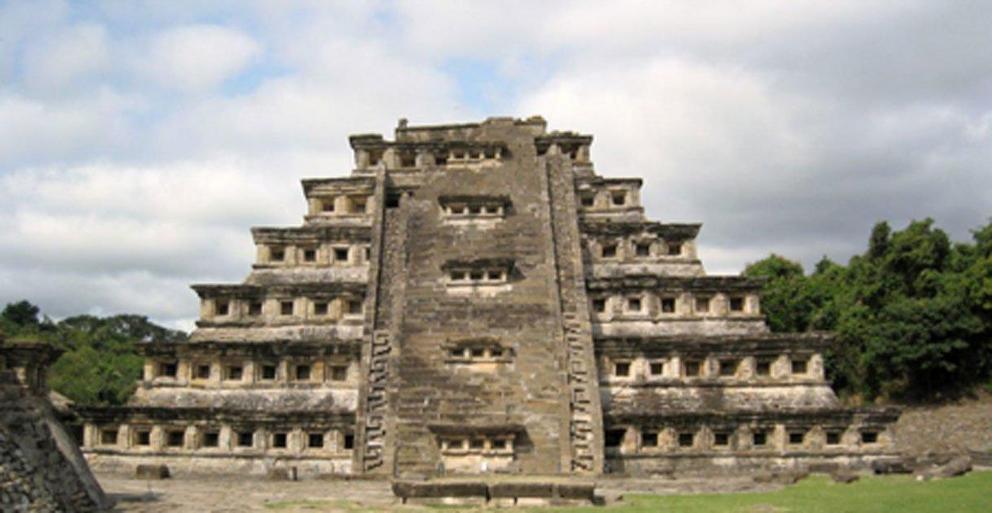El Tajín, the lost city of a mysterious people
In recent decades many lost cities have been uncovered by archaeologists or explorers. One of the most mysterious is the ancient city of El Tajín in the state of Veracruz, Mexico. The city was listed as a UNESCO World Heritage in the 1990s as all the monuments at El Tajín, including their surrounding landscape, have survived virtually unaltered over the centuries, hidden from man by the tropical jungle.
The Mystery of El Tajín
The city was built and inhabited between 800 BC and 1200 AD by a culture most likely influenced by the Olmecs, although who they were exactly, remains unknown. Some believe that they were the ancestors of the Toltecs or that they were a branch of the mighty Maya people. Some evidence suggests that the builders of El Tajín were the ancestors of the Huastec people, who still live in the state of Veracruz.
Archaeological evidence suggest that the city was wealthy and that it was the capital of a kingdom that dominated much of south-west Mexico. It straddled important trading networks and was a multi-ethnic city.
At its peak, some 20,000 people lived at El Tajín, mainly in the surrounding hills. The city and its hinterland survived the societal collapse of the Classical Period, yet El Tajín continued to prosper. In 1300, however, the city was invaded by a nomadic people known as the Chitimec, who lived in what is now northern Mexico. It was partially destroyed and abandoned, and the residents established another city some distance away. The abandoned city was known to the Toltecs, and the later Aztecs, and they associated the ruins with the supernatural and the realm of the dead. After the Spanish conquest the city was forgotten. This was possibly linked the Huastec people’s collapse due to war and disease.
The Rediscovery of the Lost City Of El Tajín
El Tajín is in a semi-tropical highland and it was soon overgrown by trees. It was hidden in the dense jungle and was only uncovered in 1785 by a government official looking for illegal tobacco plantations.
 Scale model of El Tajín
Scale model of El Tajín
News of the discovery of the lost city caused a sensation, but it was only in the 20 th century that the city was excavated. The discovery of oil opened up the area for archaeologists who, along with others, cleared the jungle from the lost city. To date only 50% of the location has been investigated and it was declared a national archaeological park to protect its many ruins.
The Marvels of El Tajín, Mexico
The oldest part of the city is the Aroyo Group, which is a plaza surrounded by an arrangement of step pyramids that have been recovered from the jungle. Situated at the top are temples.
Until the fall of the city, the plaza was used as a marketplace that also featured many statues. Perhaps the most important building at El Tajín is the Pyramid of the Niches. The pyramid gets its name from the many niches in every level and represented caves that symbolized gateways to the underworld. This construction is made from flagstones and is seven stories high. It consists of three sloping sides and one vertical wall, typical of Mesoamerica.
 Pyramid of the Niches, El Tajín
Pyramid of the Niches, El Tajín
What distinguishes this pyramid as well as the smaller ones, is the use of flying buttresses. Many experts believe that the pyramid was once painted red and was topped by a massive statue of a deity. Unlike all the others, the Blue Temple, so called as it was painted with blue pigment, does not have flying buttresses .
Another important area is the Tajín Chico, which is a complex of buildings some of which were administrative. These are all well preserved and also made from flagstones.
 El Tajín ballcourt
El Tajín ballcourt
There are at least 17 ballcourts in the city, where competitors played a game that had great religious significance. It is believed that this tradition derived from the Maya as the losers of the ballgame were beheaded and sacrificed to the deities.
How To Visit El Tajín
Buses run from Poza Rica/Papantla to the town of El Tajín and accommodation is available in the vicinity of the ancient city. It is possible to arrange a walking tour of the archaeological park, but visitors can also hire a guide.
There is an excellent museum with many artifacts such as altars. The reliefs from monuments such as the Pyramid of the Niches offer a unique insight into Mesoamerican society and its beliefs. Every year in March there is a festival celebrating indigenous culture and music and the modern town of Tajín has notable landmarks such as the church of Iglesias de la Asuncion.

